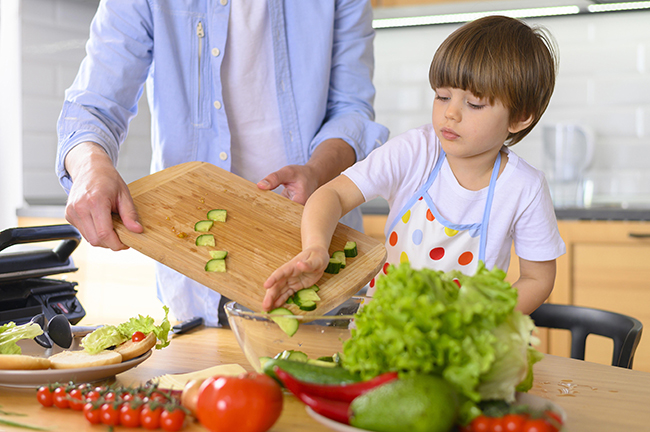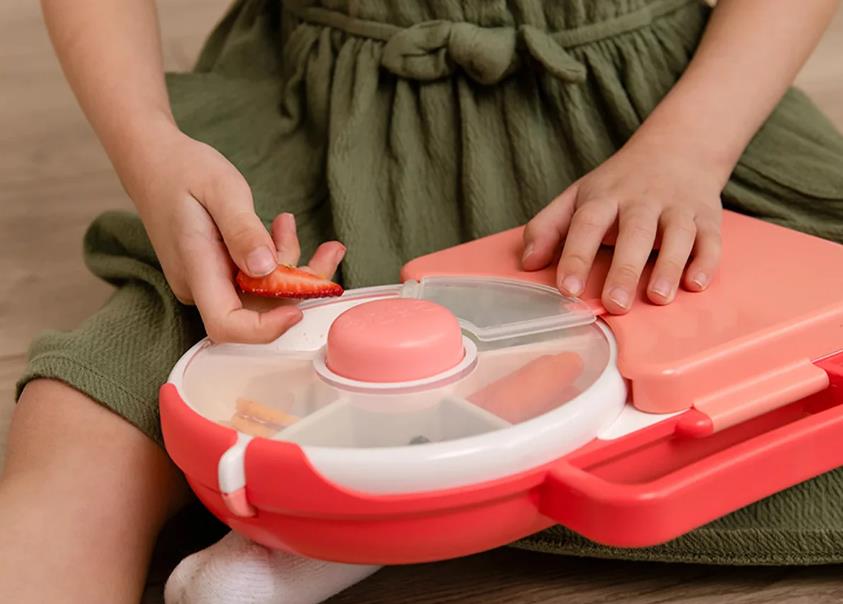Lunch boxes are entertaining and tough to pack. Provide your kid with healthy, tasty meals while considering cost and convenience. Balanced kid nutrition is essential. Their expanding bodies and minds require vital nourishment.
Creating healthful, pleasant, and nutritious lunch boxes for your kids might be difficult. For busy parents, it may be hard to balance nutritious home-cooked meals with store-bought snacks. What is the ideal homemade-store-bought ratio?
In this post, we’ll discuss the advantages and downsides and help you discover the proper balance for preparing your child’s lunch.

Homemade Meals in Lunch Box
Homemade meals are the cornerstone of a nutritious lunch box. When you prepare your child’s meals at home, you completely control the ingredients. That means you can choose fresh, whole foods and limit the use of processed items. It allows you to pack your child’s lunch box with nutrient-dense foods rich in vitamins, minerals, and fiber.
Pack Your Meals with Care: Choose Lunch Boxes from The Memo. The Memo offers various lunch boxes catering to different needs and preferences. For example, if your child prefers to have separate compartments for their food, you can opt for the Bento Box-style lunch box. It allows you to pack a variety of foods.
Pros of Homemade Meals
Preparing homemade meals for your kid’s lunch box has many advantages. Here are some of the pros of packing homemade meals:
- Nutritional Control: Making meals at home gives you the power to decide what goes into your kid’s lunch box. You can ensure they get the right vitamins, proteins, and fiber.
- Variety and Flexibility: With homemade meals, you’re not stuck with a fixed menu. Mix it up, try new recipes, cater to your child’s preferences, and accommodate dietary restrictions.
- Lower Cost Over Time: While the upfront costs of buying ingredients might seem high, cooking at home can be more economical in the long run than buying pre-packaged meals or takeouts.
Cons of Homemade Meals
While homemade meals have many benefits, they also come with some drawbacks. Here are a few cons to consider:
- Time-Consuming: Preparing meals from scratch can be a time-intensive process. It can eat into your already busy schedule between shopping for ingredients, prepping, cooking, and cleaning up.
- Requires Planning and Preparation: Homemade meals require a certain level of planning. You need to think about what to cook, ensure you have all the necessary ingredients, and find the time to prepare the meal. It’s not always as simple as grabbing something off the shelf.

Store-Bought Meals
Store-bought meals and snacks come in handy when we’re pressed for time or just need a break from the kitchen. A company has prepared and packaged these meals, allowing for easy and convenient consumption. They can range from simple snacks like cheese sticks and yogurt tubes to complex meal options such as pre-packaged salads, sandwiches, or heat-and-eat meals.
Additionally, store-bought meals and snacks often come in single-serving portions, making monitoring your child’s portion sizes easier. It can be especially useful if you’re trying to instill healthy eating habits in your children from a young age.
Pros of Store-Bought Meals
Store-bought meals have several advantages, including:
- Convenience: One of the best things about store-bought meals is how easy they are to use. No cooking, no mess, just heat and eat. It’s a real time-saver, especially on hectic days.
- Consistent Portion Sizes: These meals come in predetermined portions, which can help control calorie intake and prevent overeating.
- Long Shelf-Life: Thanks to preservatives, store-bought meals can last longer. It can be handy when you need a backup plan or you’re stocking up for emergencies.
Cons of Store-Bought Meals
However, store-bought meals and snacks also have some downsides to consider:
- Higher Cost Over Time: While they may seem cheap at first glance, the cost of store-bought meals can add up over time. It’s often more expensive than cooking at home.
- Limited Control Over Ingredients: With pre-packaged meals, you have little say in what goes into your food. It can be a problem if you’re trying to avoid certain ingredients or allergens.
- Preservatives and High Sodium Levels: These meals often contain preservatives and high sodium levels to extend their shelf life. It isn’t ideal if you’re watching your salt intake or trying to eat clean.
Conclusion
Finding the perfect balance between homemade and store-bought meals when packing your child’s lunch box can seem challenging. Yet, it doesn’t have to be a daunting ordeal. It’s all about understanding the pros and cons associated with each and incorporating that knowledge into your routine to benefit everyone. Homemade meals provide nutritional control and flexibility but require some planning and time.
On the other hand, store-bought meals are convenient and have a longer shelf life but might not be as healthy due to preservatives and high sodium levels. Ultimately, the goal is to ensure your child has a mix of tasty, nutritious meals that fuel their day. A good approach might be to aim primarily for homemade meals, then supplement with store-bought options for those particularly busy days. Remember, the key is not to aim for perfection but to strive for balance and variety in your child’s diet.
